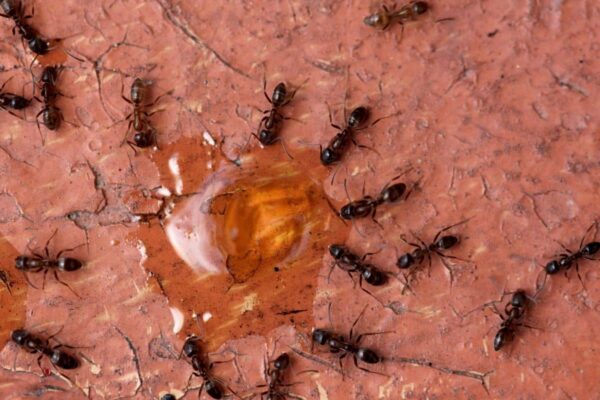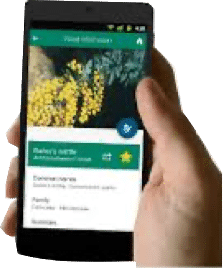Argentine ant
About This Species
Argentine ants are one of the most prolific invasive insects in the world. They form super colonies, where many nests are packed very closely together, and workers from different nests show no aggression towards one another. This allows Argentine ant populations to grow to enormous proportions capable of reaching up to 1 million ants within a space of 10 m² underground.
Argentine ants are native to much of South America and were first found in BC in 2012. Fortunately, these ants cannot tolerate cold temperatures, and thus may not be able to spread throughout much of BC – though they may be able to establish in other areas of the South Coast. Argentine ant nests spread by a process called ‘budding,’ where new queens leave a nest and walk a short distance before settling a new nest nearby. Because of this, they don’t spread very far very fast. Spread over larger distances is usually through human activity.
Though these ants are not dangerous to humans, they pose a serious threat to other ant species, and can become a serious nuisance pest in human buildings and public spaces. Argentine ants do not sting or bite humans, but they are known to forage inside homes in large numbers, creating dense foraging trails containing thousands of individual ants.
How to Identify
Argentine ants are typically 3.5 mm long and light brown, and they are easy to mistake for other species that forage inside human homes. They have no odor when crushed.
Similar species: Odorous house ant (Tapinoma sessile). Odorous house ants release a slightly sweet, solvent-like odor when disturbed or crushed.

Take Action
Prevention is the best approach.
-
If you need advice about invasive species on your property or you are concerned about reported invasives in your local area, contact your local government or regional invasive species organization.
PREVENTION TIPS
If you have ants in your home or place of business, contact a local pest management company.
If you are traveling or moving soil or potted plants from an area where Argentine ants are known to live, check your vehicle and belongings carefully to avoid bringing along any hitchhikers.
REPORT TO PROTECT BC’S BIODIVERSITY

Use the app
Observe and report to protect BC’s biodiversity

Report through this website
Use our form to tell us what you’re seeing and where.


